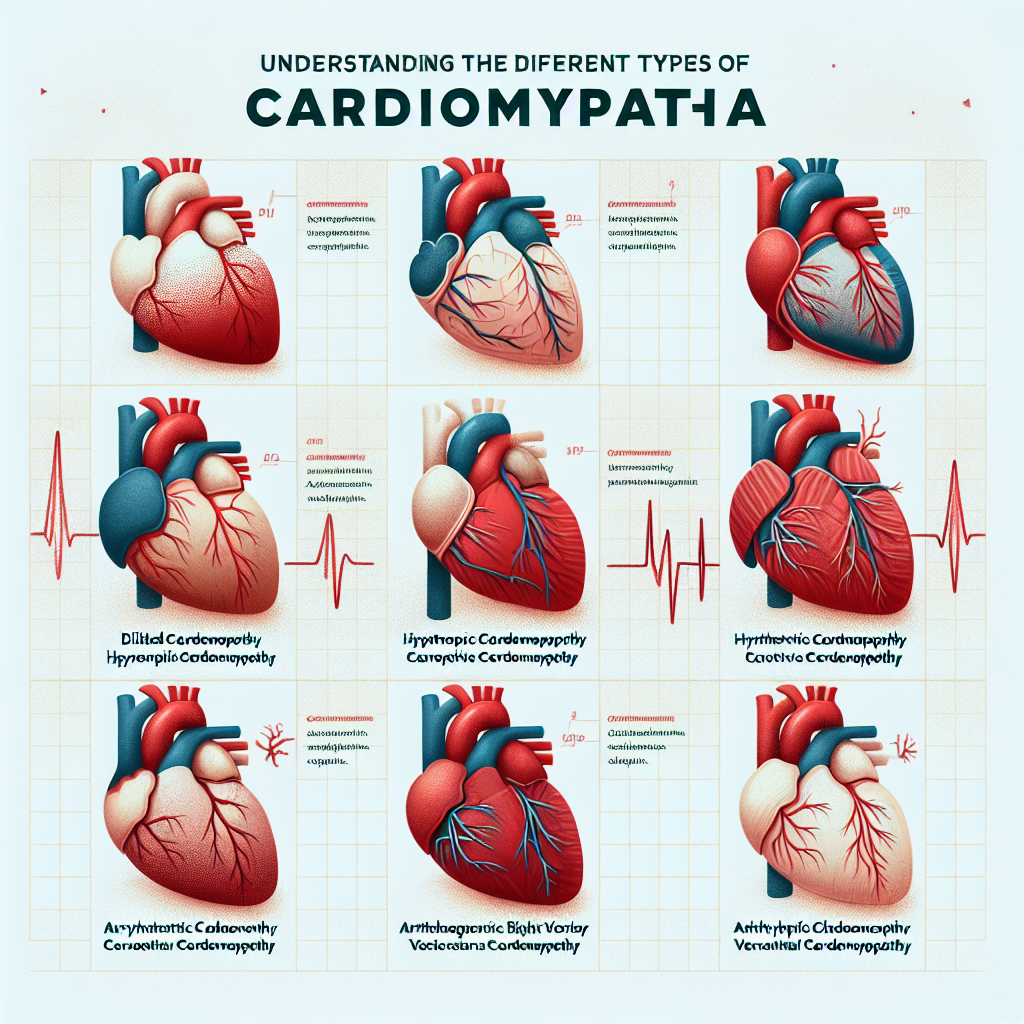Cardiomyopathy is a medical condition often associated with an unhealthy heart muscle. The heart muscle gets harder, thicker, or weaker in individuals suffering from this disease, preventing the heart from pumping blood efficiently to fulfill the body’s vascular needs. At its worst, it can lead to arrhythmias or heart failure. There are primarily four types of cardiomyopathy: dilated, hypertrophic, restrictive, and arrhythmogenic right ventricular cardiomyopathy. Understanding these different types is essential as they are distinctive in their manifestation, carry unique symptoms, and have diverse treatment methods.
Dilated Cardiomyopathy
Dilated cardiomyopathy is the most prevalent form. It mostly begins in the left ventricle of the heart and, as it advances, can affect the right ventricle. Over time, the disease causes the heart chamber to dilate, impairing the heart’s ability to pump blood effectively. Factors leading to this ailment include coronary artery disease, alcohol and drug abuse, viral infections, and certain chemotherapy drugs. It occasionally runs in families as well.
Hypertrophic Cardiomyopathy
Hypertrophic cardiomyopathy, a common cause of unexpected cardiac arrest in young people, involves the thickening of the heart muscle without an apparent cause. This type of cardiomyopathy could hinder blood flow out of the heart and may cause shortness of breath, chest pain, fainting, and irregular heartbeats. Although this condition is often hereditary, older adults are not immune to it either.
Restrictive Cardiomyopathy
Restrictive cardiomyopathy, the least common type, typically affects older adults. The heart ventricles become rigid and restrict the filling of blood into the heart, which reduces the amount of blood pumped out to the body. It can be due to diseases elsewhere in the body that affect the heart or idiopathic (having no known cause). Symptoms may include fatigue, breathlessness, and edema (swelling).
Arrhythmogenic Right Ventricular Cardiomyopathy
Arrhythmogenic right ventricular cardiomyopathy (ARVC) primarily affects the right ventricle. It causes part of the heart muscle to break down over time, progressively replaced by fatty deposits. This replacement of the muscle tissue disrupts the heart’s electrical signals, leading to arrhythmias. It is often a hereditary condition and can cause sudden death, particularly in young people and athletes. Understanding its symptoms early is critical in preventing its lethal consequences.
Conclusion
The different types of cardiomyopathy function distinctively and therefore present unique symptoms. Whilst some types of cardiomyopathy are genetic, others result from a lifestyle that strains the heart muscles. It is crucial to understand these forms early, as this could aid in their early diagnosis and management, improving one’s quality of life. Medical planning and therapeutic measures can effectively control most symptoms in people with cardiomyopathy, empowering them to lead productive lives. Therefore, an understanding of the various types of cardiomyopathy is not only essential for cardiovascular health but also for public health at large.
Frequently Asked Questions
1. Who is at risk of developing cardiomyopathy?
Anyone can develop cardiomyopathy, but certain types of the disease are more common in certain age groups or people with a family history of the condition. Other factors include long-term alcohol or drug abuse, persistent high blood pressure, and other heart diseases.
2. What are the symptoms of cardiomyopathy?
Early stages of cardiomyopathy may not have any symptoms. However, as the condition progresses, symptoms may include shortness of breath, fatigue, swelling of the legs, ankles, and feet, irregular heartbeats, and fainting spells.
3. Can cardiomyopathy be cured?
While there is no cure for cardiomyopathy, treatments exist that can control symptoms and prevent complications. Treatment usually involves lifestyle changes, medications, and sometimes surgical procedures.
4. Is exercise safe for someone with cardiomyopathy?
Certain types of exercise may be harmful for someone with hypertrophic or dilated cardiomyopathy. Such patients should consult a cardiologist before undertaking any fitness program. However, moderate-intensity activities like walking or cycling can be beneficial.
5. Can cardiomyopathy be prevented?
Most types of cardiomyopathy can’t be prevented. However, healthy lifestyle choices such as maintaining a balanced diet, regular exercise, and avoiding alcohol and drugs can reduce the risk.

Leave a Reply